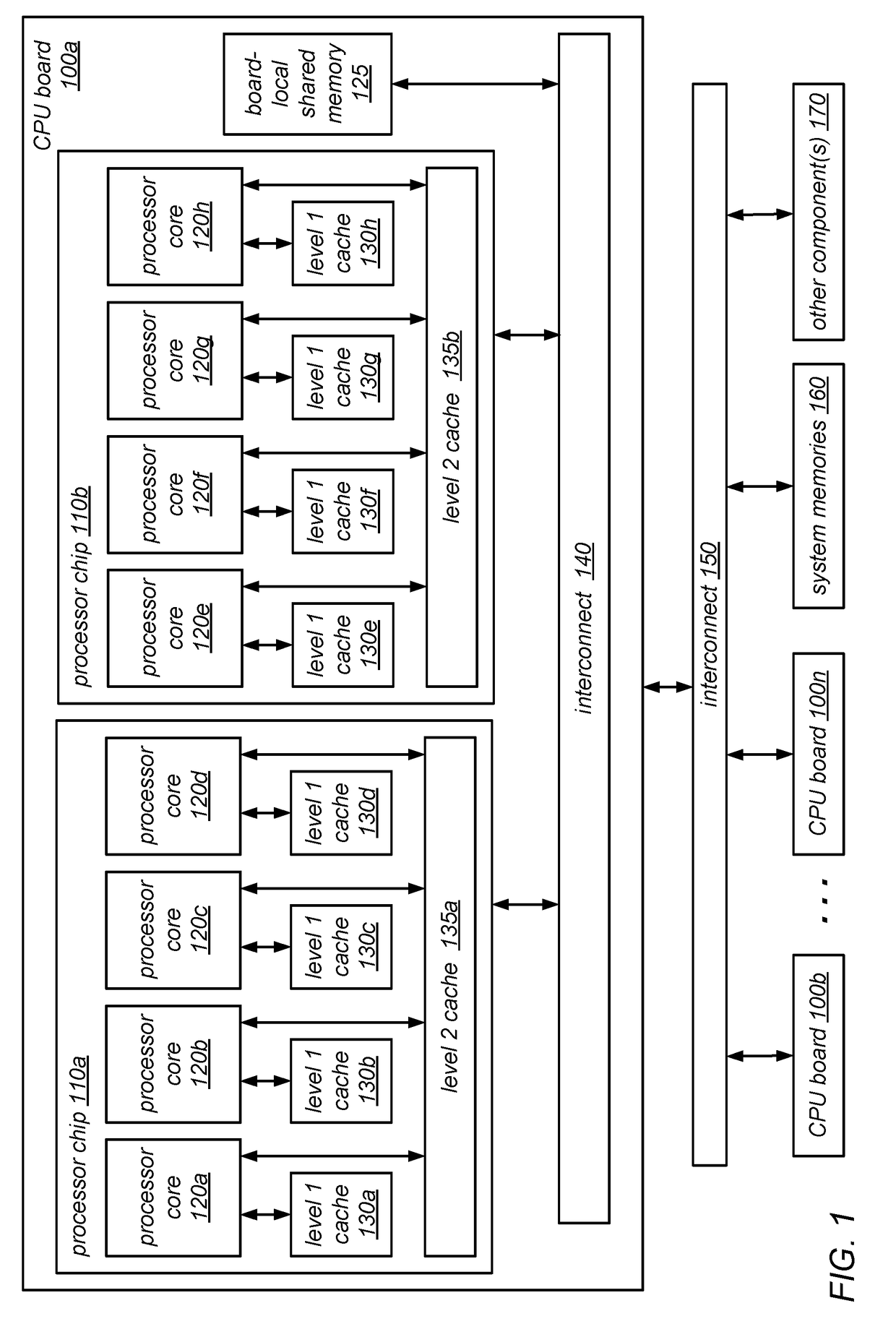System and Method for Promoting Reader Groups for Lock Cohorting
a reader group and cohorting technology, applied in the field of reader group cohorting, can solve the problems of degrading the performance of other unrelated programs executing in the system, excessive coherence traffic of the execution program, poor scalability and performance, etc., and achieve the effect of improving the formation and/or performan
- Summary
- Abstract
- Description
- Claims
- Application Information
AI Technical Summary
Benefits of technology
Problems solved by technology
Method used
Image
Examples
Embodiment Construction
[0023]As noted above, reader-writer locks are a class of mutual exclusion locks that permit simultaneous acquisition by more than one thread that intends to access the data protected by the locks in read-only mode or exclusive acquisition by one thread that requires write access to the data protected by the locks. The use of reader-writer locks may enable significantly greater concurrency (as compared to traditional mutual exclusion locks) between threads that acquire a reader-writer lock in read-only mode, and may thus result in much better scalability than can be achieved using traditional mutual exclusion locks. For example, in some embodiments, reader-writer lock may can scale well even on systems having many thousands of CPUs.
[0024]Broadly, reader-writer locks may be thought of in terms of a packing problem in which time passing is indicated on the X-axis and critical section occupation by process (or CPU) count is indicated on the y-axis. For a given reader-writer lock, for an...
PUM
 Login to View More
Login to View More Abstract
Description
Claims
Application Information
 Login to View More
Login to View More - R&D
- Intellectual Property
- Life Sciences
- Materials
- Tech Scout
- Unparalleled Data Quality
- Higher Quality Content
- 60% Fewer Hallucinations
Browse by: Latest US Patents, China's latest patents, Technical Efficacy Thesaurus, Application Domain, Technology Topic, Popular Technical Reports.
© 2025 PatSnap. All rights reserved.Legal|Privacy policy|Modern Slavery Act Transparency Statement|Sitemap|About US| Contact US: help@patsnap.com



